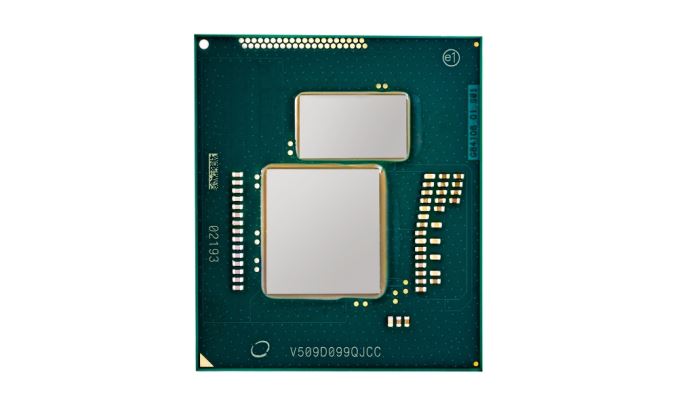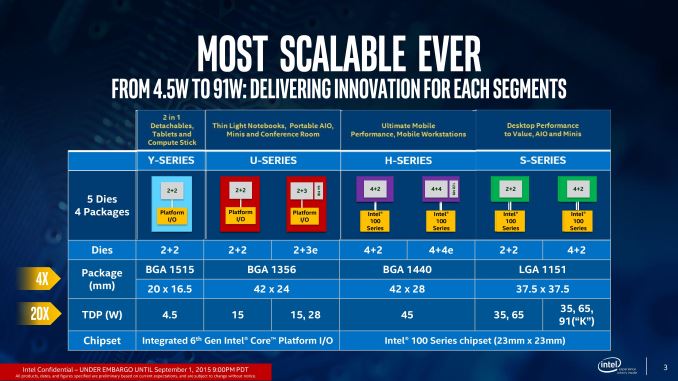The Death of Intel’s Broadwell Has Been Greatly Exaggerated - Socketed Broadwell Continues
by Ryan Smith on September 17, 2015 8:45 PM EST- Posted in
- CPUs
- Intel
- Broadwell
- Crystal Well
- Iris Pro

To hop right into the heart of matters, IT World published an article earlier this afternoon stating that Intel was discontinuing their two desktop Broadwell socketed SKUs, the Core i7-5775C and the Core i5-5675C. The two SKUs are notable because they are to date the only socketed Broadwell processors on the desktop, and they are also the only socketed desktop Core processors available with a GT3e Iris Pro GPU configuration – that is, Intel’s more powerful GPU combined with 128MB of eDRAM.
The idea that these processors were discontinued came as quite a shock with us, and after asking Intel for more details, the company quickly responded. Intel has made it very clear to us that these processors have not been discontinued, and that the company continues to manufacture and sell the processors as part of their current Broadwell lineup.
While the company doesn’t have an immediate explaination for the confusion at this time, we believe it may stem from a mix up over Intel’s plans for GT3e/GT4e Skylake parts on the desktop. In short, the company does not have any socketed GT3e/GT4e Core family parts on their roadmap for Skylake, so these Broadwell parts will not be seeing a Skylake refresh. That said, it should also be noted that Intel has not yet begun to ship GT3e/GT4e Skylake chips in other form factors (e.g. the 45W mobile H series), so Intel’s current Broadwell SKUs remain as their top-of-the-line SKUs for graphics across all segments, and it’s likely that will remain the case until 2016 when the Skylake 4+4e parts launch for mobile.
Part of the confusion may also stem from a lack of good supply for these processors in the US. Though we’ve seen evidence that the supply is ample in Europe and Asia, retailers such as Newegg have regularly been out of stock of these two processors since their launch in June. Intel’s last comment on the matter, made to the Tech Report back in August, is that the overall supply situation should pick up through Q3, which at this point is the rest of September. After which these SKUs will remain available and Intel’s top desktop graphics SKUs throughout the run of Skylake.











43 Comments
View All Comments
Gigaplex - Friday, September 18, 2015 - link
The mobile SoCs (Qualcomm, Apple etc) don't appear to do so.nightbringer57 - Friday, September 18, 2015 - link
Well, mobile SoC are a different market, where each unit is mafe of lots of different IPs, and where you don't have the same kind of fragmentation of the offering. But still, there is at least some level of binning in the production.But look at the snapdragon 800 series. Meaning 800/801. Amongst the really complicated offering, you can find some models with the only difference being maximum clock speeds.
Though it is true it is less obvious than for common CPU/GPUs.
But still. What's wrong in using binning techniques to keep lower-end prices down?
Gigaplex - Friday, September 18, 2015 - link
You didn't specify that the mobile market was excluded in the question, and in fact you implied it was included by mentioning the term SoC.Re: Snapdragon 800 vs 801 - the 800 isn't a binned 801, the 801 was released quite a bit after the 800 and replaced it in the production line as yields improved. The 801 also has eMMC 5 support plus DSDA, whereas the 800 only supports eMMC 4.5 with no DSDA. There actually was some binning that I wasn't previously aware of within the 801 SoC (some were 2.3GHz and some were 2.5GHz) so you do have a point there.
I never said there was anything wrong with binning, but artificially disabling certain features (virtualisation in particular) purely for marketing reasons really messed things up for the Windows XP mode during the Windows 7 release. I'm still bitter about paying extra for a laptop specifically to get virtualisation support, only to find that Intel didn't bother documenting that the chip I got was the only one of the advanced P line that didn't get the feature until I emailed them about it.
0razor1 - Friday, September 18, 2015 - link
I don't think it was binning that had much to do with it as much as some manufacturers choosing to run lower clocks ( thus lower volts and lower power) to shave off the heat produced. This showed in the M8.Low cost manufacturers don't just put 2.5GHz 801's in their phones unless they cost the same. Some chose to down-clock and undervolt -I think that's all there is to it.
nightbringer57 - Friday, September 18, 2015 - link
That was my point for SoC, not meaning (but I was not clear) that 801 is a binned 800, just meaning that some models in the series were binned models.The unclear CPU name thing is pretty irritating of course. But my point is:if they want to sell non-VT CPU, the fact that it's disabled/cut out for binning reasons doesn't incur a loss on your side compared to the case whre they would simply produce cores without the VT unit. Actually I think you can (more or less) trust them with the fact they wan to cut down production costs as much as possible. The problem lies with the fact that they still choose to sell lower end processors without those functionalities, thus creating an artificial advantage for their higher-end, no matter how they produce them.
nils_ - Sunday, September 27, 2015 - link
I thought they only disable the IOMMU (VT-d) not the normal virtualization (VT-x) on *K Series, and Skylake even has it on *K series. Still that IOMMU thing is really dangerous because it can be used to prevent attacks on ThunderBolt / USB 3 where any device can use DMA to access memory.prisonerX - Monday, September 21, 2015 - link
It's not simply binning, which reflects the natural performance variation in chips, it's destroying working silicon which the customer is paying for and then making that customer pay a premium for it.And that's just one of Intel's repugnant practices.
Christopher1 - Friday, September 25, 2015 - link
I think that you are missing that people are not happy when they find that they have paid a large amount of money for a chip that COULD if Intel did not artificially limit functionality do everything that a slightly more expensive chip can do.yannigr2 - Friday, September 18, 2015 - link
Broadwell looked to me from the beginning, more like a back up plan, in case something was going wrong with Skylake CPUs than a CPU line of products that could stay in the market alongside Skylakes. 14nm AND a new design was a big risk even for Intel. Skylakes look OK, so Broadwell is not really a necessity for Intel.This is what AMD should have done when introducing Bulldozer. Shrink Thuban at 32nm and after realizing that Bulldozer was a failure, continue improving the Phenom II design and abandon Bulldozer.
silverblue - Friday, September 18, 2015 - link
I doubt they had the money to develop THREE cores (K10-derivative, Bulldozer, Bobcat) at the same time. Regardless, K10.5 would've needed a significant overhaul to include support for new ISAs, presumably to the point that a new architecture would've been needed anyway.